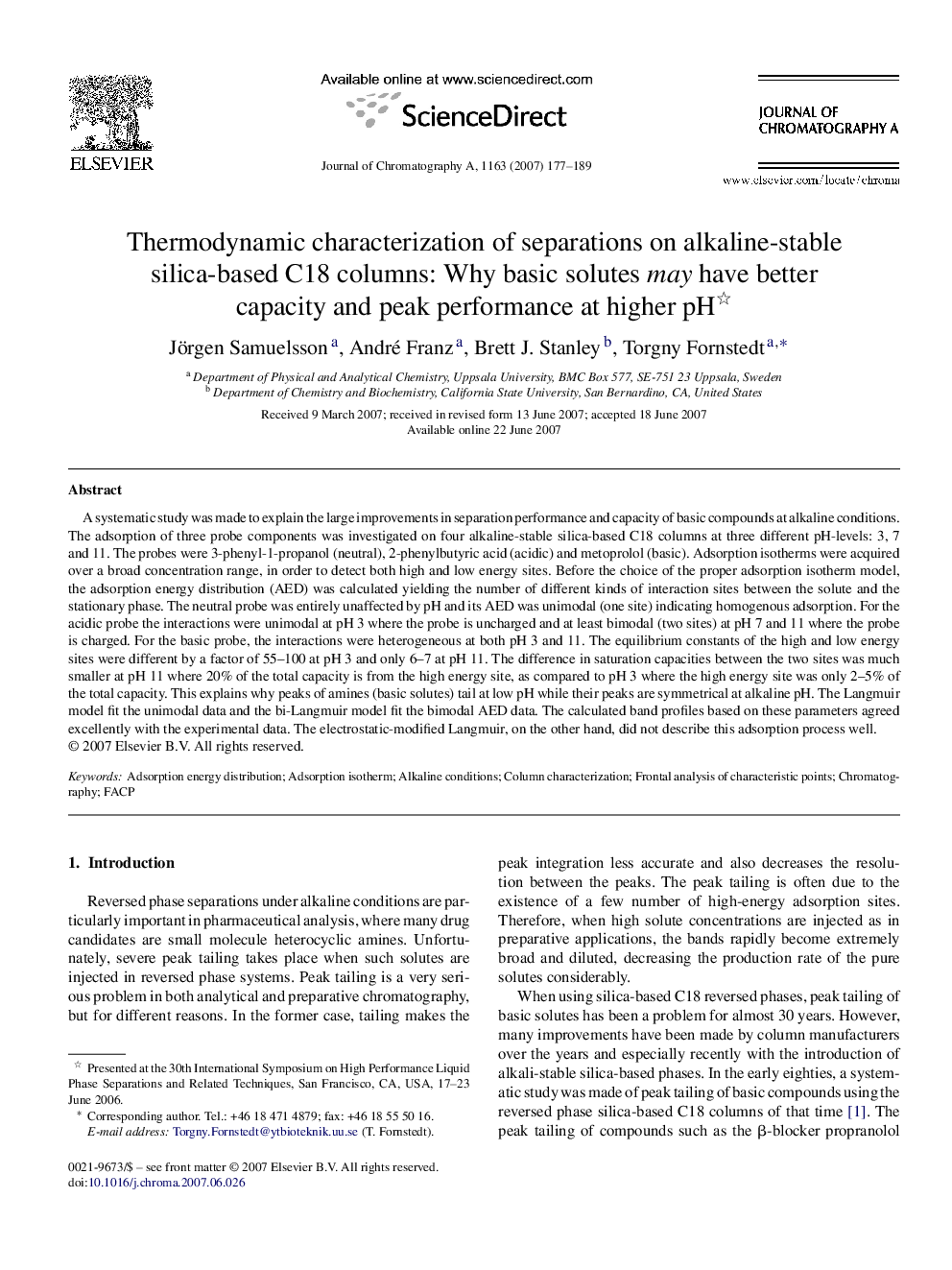| Article ID | Journal | Published Year | Pages | File Type |
|---|---|---|---|---|
| 1208157 | Journal of Chromatography A | 2007 | 13 Pages |
Abstract
A systematic study was made to explain the large improvements in separation performance and capacity of basic compounds at alkaline conditions. The adsorption of three probe components was investigated on four alkaline-stable silica-based C18 columns at three different pH-levels: 3, 7 and 11. The probes were 3-phenyl-1-propanol (neutral), 2-phenylbutyric acid (acidic) and metoprolol (basic). Adsorption isotherms were acquired over a broad concentration range, in order to detect both high and low energy sites. Before the choice of the proper adsorption isotherm model, the adsorption energy distribution (AED) was calculated yielding the number of different kinds of interaction sites between the solute and the stationary phase. The neutral probe was entirely unaffected by pH and its AED was unimodal (one site) indicating homogenous adsorption. For the acidic probe the interactions were unimodal at pH 3 where the probe is uncharged and at least bimodal (two sites) at pH 7 and 11 where the probe is charged. For the basic probe, the interactions were heterogeneous at both pH 3 and 11. The equilibrium constants of the high and low energy sites were different by a factor of 55-100 at pH 3 and only 6-7 at pH 11. The difference in saturation capacities between the two sites was much smaller at pH 11 where 20% of the total capacity is from the high energy site, as compared to pH 3 where the high energy site was only 2-5% of the total capacity. This explains why peaks of amines (basic solutes) tail at low pH while their peaks are symmetrical at alkaline pH. The Langmuir model fit the unimodal data and the bi-Langmuir model fit the bimodal AED data. The calculated band profiles based on these parameters agreed excellently with the experimental data. The electrostatic-modified Langmuir, on the other hand, did not describe this adsorption process well.
Keywords
Related Topics
Physical Sciences and Engineering
Chemistry
Analytical Chemistry
Authors
Jörgen Samuelsson, André Franz, Brett J. Stanley, Torgny Fornstedt,
